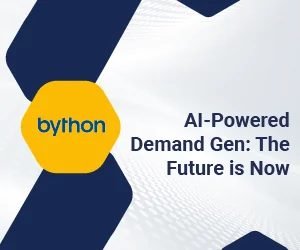The pressure to fill premium positions with the best fit applicant is at an all-time high in the face of market re-evolution and cutthroat competition. As a result, if the organization has not yet built a stellar recruitment team of its hiring managers and recruiters, they may face unfavorable outcomes such as lost time, wasted money, and, worst of all, a bad hire.
Such crash landings result in blame games, which have a negative impact on the company’s culture, work atmosphere, and productivity. A visionary employer will always encourage training and development procedures to ensure that their recruiters collaborate well and emerge as winners against all odds.
Why is Training Important For The Recruiting Team?
The lack of connection between hiring managers and recruiters could lead to complexity in hiring. A recruiter who fails to recognize the intrinsic value of a candidate’s soft and technical skills for a specific role may put the organization in an unprecedented predicament, causing hiring to be delayed or derailed. Therefore, a system power-packed with an effective Stellar Recruiter training program empowers the company to set the exact narrative of intake. This procedure confirms coordination, making Hiring Managers and Recruiters allies rather than adversaries.
( Also Read: What is Full Cycle Recruiting? )
Tips To Consider for A Recruiter Training Program
-
Let recruiters focus on your branding
Recruiters contact potential applicants daily and serve as the initial “face.” A recruiter who is conversant with the company culture and belongs to a strong employer brand leads the talent acquisition race. To attract outstanding talents, good firms should effectively flaunt everything that makes them great.
According to studies, 84 percent of job seekers believe a company’s reputation as an employer is essential when deciding where to apply for a job. Employer branding entails promoting a particular identity and associated growth indicators over a set period. It has been found that 9 out of 10 candidates(1) do apply for a job if it comes from an actively maintained employer brand.
An inferior brand image can swiftly impede hiring efforts and make it more challenging to attract the best candidates. The organization may miss out on excellent prospects, perhaps losing money and damaging other aspects such as productivity and employee morale.
A strong employer brand enhances candidate applications and acceptance rates, enabling recruiters to outperform in a tight labor market without being a marketer.
Therefore, like marketing, the employer must invest resources in recruitment to keep the employer brand illuminated.
-
Make sure your recruitment team builds relationships with other departments.
Hiring managers and recruiters complement one another in the recruitment process. Only when the hiring manager, who makes the ultimate decision, and the recruiters, who carry out the process, work in tandem can there be a successful onboarding.
If these partners ignore or undervalue meaningful dialogue, they may find themselves in a dead-end with no way out. Communication breakdowns, a loss of influence, a prolonged recruiting process come from misalignment and inconsistent requirement analysis, turning a search into a challenge.
Interdepartmental connections are formed by cross-functional communications, which are undertaken during the onboarding process of new members. This process includes meetings on a common point agenda. The documented exchange of ideas across the table helps in the precise assessment of intake and the expectations that come with it.
Before the commencement of the hiring process, the hiring manager must communicate with their recruiter, provide them with a job description or ask the recruiter to construct one. Candidates are sourced by the recruiter and sent to the hiring manager for consideration. The hiring manager evaluates and updates the recruiter about the status of the candidate. The feedback received from the hiring manager determines whether the search must continue or stopped.
Therefore, all the departments involved must function in synchronization to attain the common goal.
-
Introduce a recruiting work model
The recruiting work model demonstrates a series of actions that include assessing a position’s requirements, attracting candidates for the job, screening applications, and selecting the best candidate from among them. The size of the organization, the employment criteria, the salary structure, and the growth rate are all elements that influence the recruitment process.
The employer can keep track of progress in recruitment by creating proprietary and brief flowcharts for the hiring process. The recruitment work model establishes the recruitment goal, identifies and describes needs, and assesses resource engagement.
A good recruitment team is a crucial component of the recruiting work model, which incorporates recruiters in unification with technological tools such as the Applicant Tracking System, Location Technology, and Video Interviewing approaches.
The recruiting work model is crucial because one deviation can affect the productivity of the entire workforce.
-
Develop necessary recruiting skills
Recruiters are in charge of representing the organization in the public eye. So, recruitment acumen demands a wide range of abilities from recruiters. Recruiters are responsible for sourcing, screening, interviewing, rejecting, and onboarding individuals, among other things. Their job also comprises conducting research, networking, and communicating with other team members, all of which add to hires’ overall success and quality.
Therefore, expert recruiters are the ones who possess skills such as listening ability and good communication ability. They should be target-oriented and have patience while dealing with the hiring teams and applicants. Hence, employers must contrivance a policy to gauge the hiring team’s skill and capture candidate experience to help recruiters improve themselves and become candidates with desirable recruiting abilities.
-
Teach your recruiters to provide feedback
Arrange meetings or mini-workshops with recruiting teams to teach them how to communicate effectively after the interview. The candidates can learn where they did well and where they can improve by receiving post-interview feedback. Post-interview feedback is vital because it helps candidates have a better experience, saving the company expense and building a good reputation.
It’s also essential to share feedback with team members: the timely, well-organized, and easily accessible feedback benefits in making better recruiting decisions more quickly. Organizations should create systems to track interview comments for hiring managers and the entire hiring team throughout the recruiting process. This flow of information simplifies the hiring process and offers a seamless hiring environment.
Timely feedback in the hiring process assists in making a more refined final decision and provides a positive applicant experience by minimizing repetitive queries. Hence the practice of feedback sharing should be taught in organizations.
-
Provide on-demand learning
Learning is a continuous process in the recruitment domain. The recruitment environment frequently changes, from legislation to new technologies. Skills that are critical one year may become obsolete the following—long-standing methods of operation yield declining returns over time. Since the recruiter has to dwell in a dynamic atmosphere, it becomes essential to keep one self-acquainted with the latest trades and trends that can help one become an expert. Proactive recruiters emphasize on learning and development culture to upsurge recruiting process.
Recruiters benefit from training because it provides them with the skills they need to succeed. Online training programs and certifications help recruiters to up-market their skills. They must assess their skills and how they align with their roles in the present scenario. The learning programs induced in the recruitment process ensure growth and productivity even in adverse situations.
Final Thought
Every hiring in an organization involves both processes and resources both. The stellar recruiter training program indeed speeds up the hiring process, onboard the most outstanding employees, narrow learning and development gaps, and increase employee engagement by using the power of this process, which is backed by a tech recruitment software or a tech recruiting platform.








